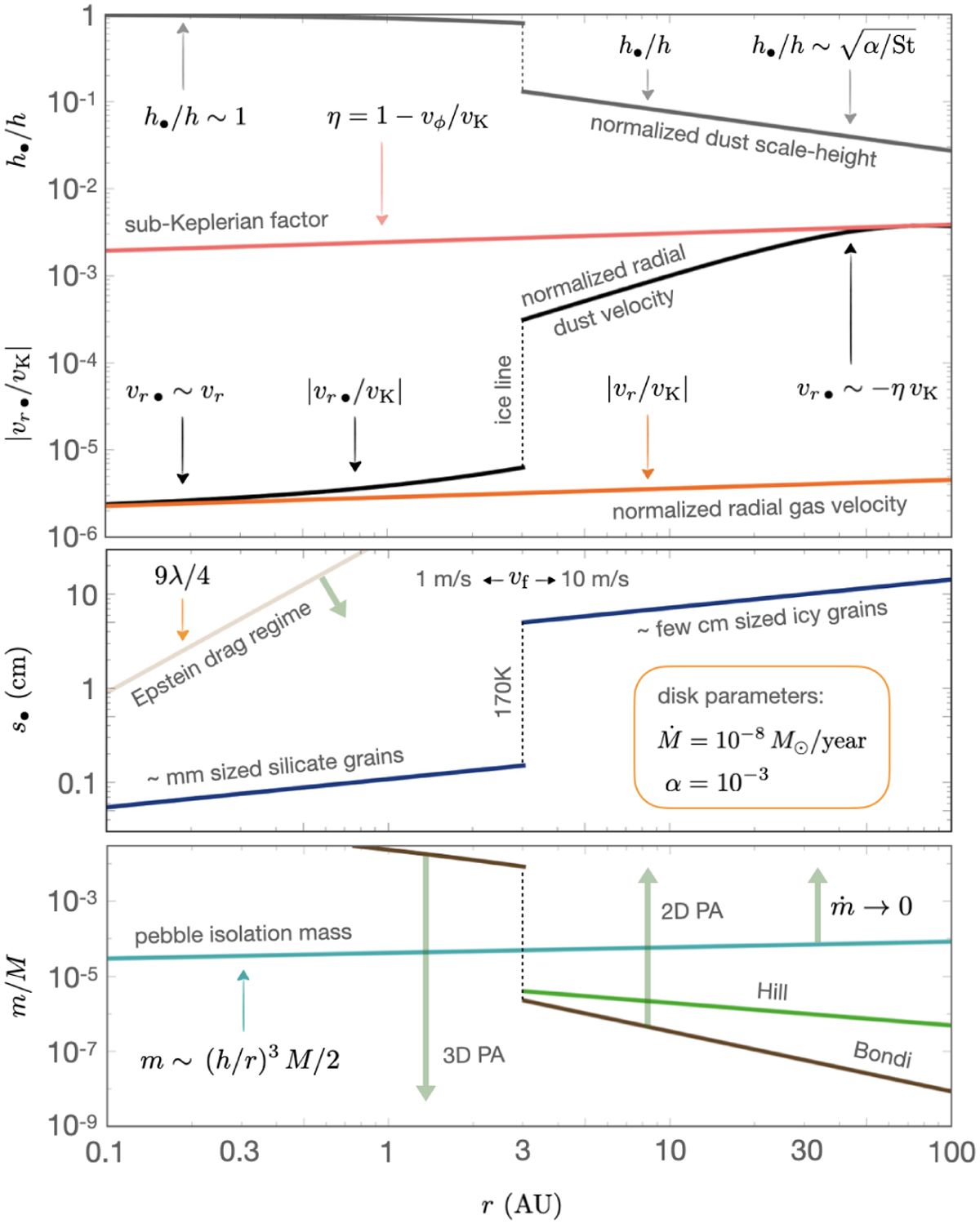Fig. 4

Download original image
Vertical thickness of the dust subdisk, radial drift of solids, particle size profile, and pebble accretion regimes in a fiducial (α = 10−3 and Ṁ ~ 10−8 M⊙ yr−1) model disk. Owing to strong dust-gas coupling in the inner disk, the solid layer is well-mixed (such that h• ~ h) and experiences slow (vr• ~ vr) inward drift. In the outer disk, dust settling is much more efficient, and the radial velocity of icy grains achieves a value comparable to its upper limit of vr• ~ ηvK. The model further predicts that particle radii within the inner disk do not exceed the millimeter scale, while readily growing to sizes as large as a few centimeters beyond the ice line. The change in physical regimes of dust evolution across the water ice sublimation front translates to an important distinction in the modes of pebble accretion between the inner and outer regions of the nebula. While rapid 2D capture of solid dust can ensue in the outer disk for relatively low-mass protoplanetary embryos, the inner disk is fuly confined to the comparatively inefficient 3D regime of pebble accretion.
Current usage metrics show cumulative count of Article Views (full-text article views including HTML views, PDF and ePub downloads, according to the available data) and Abstracts Views on Vision4Press platform.
Data correspond to usage on the plateform after 2015. The current usage metrics is available 48-96 hours after online publication and is updated daily on week days.
Initial download of the metrics may take a while.


